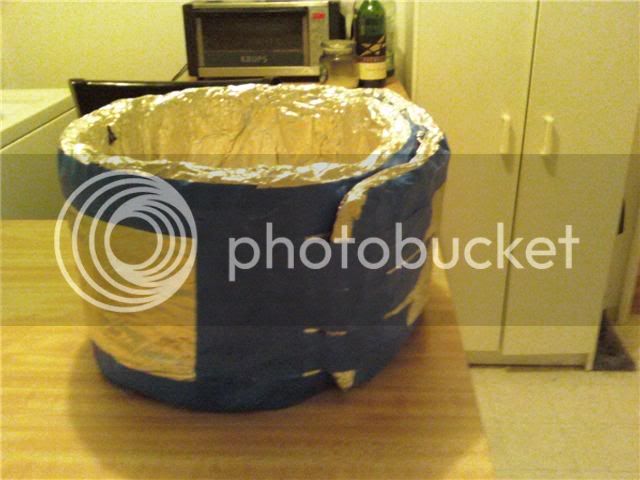Kronin
Well-Known Member
DB, step 10 ... are you just pouring the wort into the carboys with funnel, or are you syphoning it?
does it matter?
does it matter?
















Back reviewing the guide for my next beer...such a great guide!
I just ordered a new 60qt brew kettle (In preparation for full boils and double batches). This may be a dumb questions, but is that pot going to be too large for this method to boil in? I would still do my mash in the smaller 5 gal pot.
Thanks.
\Time might be more of a factor...how long did you mash?

Make an insulator that you can slide on once you reach temp. My buddy made one out of a windshielf reflector. I've wrapped my pots in blankets in the past and now I have a wrap made out of actual insulation.


great thread, thanks DB! Will be trying out this method on my next batch
edit: if I'm looking at an all-grain recipe and trying to convert it to partial mash, how close would i be if i:
1) take all the specialty grains and as much base malt as i can comfortably mash with the pots i have available
2) replace the rest of the base malt from the recipe with about 75% of their weight in DME
does that sounds about right?
I think it's 60%
0.6 lb DME = 0.75 lb LME = 1 lb Grain
But that's correct, just replace the base malt. You could choose an extract that matches the type of grain, too, to get even closer. American 2-row = Briess Light, Marris Otter = Muntons Light, Pilsner Malt = Briess Pilsner, etc.
just RDWHAHB
If you have krausen, you have beer.

Question and it might already be in the 18 pages but I assume you turn the heat off when mashing for the 30-60 minutes. Do you have any problems with the mash going too low temperature?
I built a little insulator out of a towel some tinfoil and masking tape. It held my temp even at 153. Thanks for your help!

Deathbrewer, is there any reason this couldnt work for a 5 gallon all grain batch in two 30 qt pots? I got a turkey fryer for $30 and am thinking about getting another one.
OK...first attempt at partial mash and I used this method. I am pretty sure I messed up. Not that the beer will be bad. Just that I think I had really bad efficiency.
I had a problem keeping the mash between 150 and 155. When I put the grain in the 170F water dropped to 148. So I applied some heat and got it back to 154 and wrapped up the pot. 10 minutes later and the temp was down to 144. So I applied more heat and gave the mash some stirring. Then when I was back to ~154 I removed from heat and wrapped it up again. 15 minutes later I checked and the mash was at 161F. So left the lid off and stirred it for a little while. It some time but the mash returned to 153. Then I back to below 150.... You get the idea.
In the end when I checked the gravity of the 5 gal wort prior to pitching the yeast my reading was 1.040 (had hoped for something closer to 1.050). If the reading it correct then I believe I managed only 50% efficiency. Normally when I have brewed extracts and I missed my expected OG I'd just chaulk up as poor mixing or something like that.
Can poor mixing once again be the problem with a partial mash? My boil was only about 3gals.
Deathbrewer, is there any reason this couldnt work for a 5 gallon all grain batch in two 30 qt pots? I got a turkey fryer for $30 and am thinking about getting another one.
DeathBrewer said:7 lbs of grain with 2.5 gallons of water (1.43qt/lb) gives you a total of 3.06 gallons for your mash
